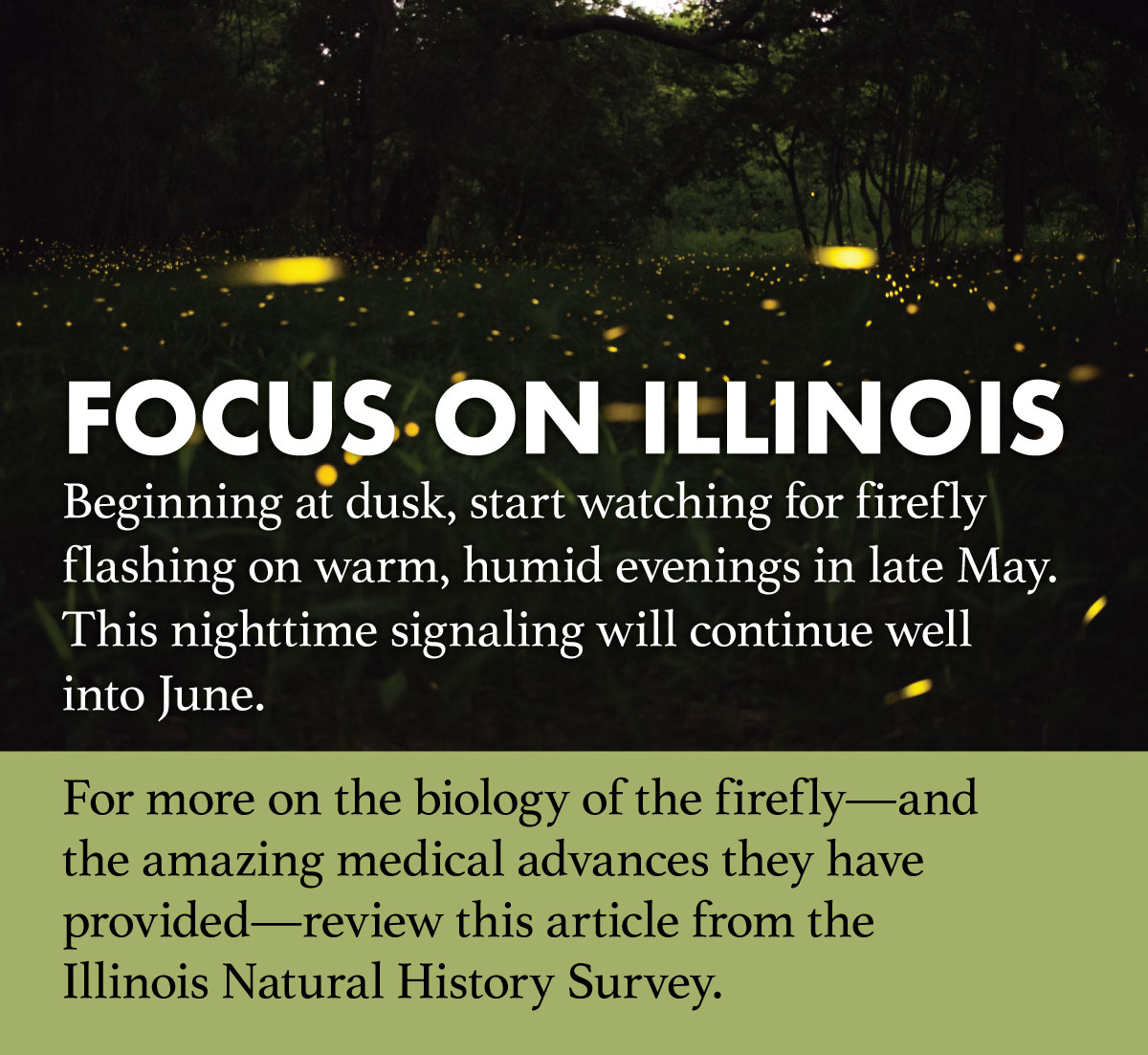
Photo by Michael R. Jeffords.



Photo by Michael R. Jeffords.
On many summer evenings, we are charmed by the flashing and blinking of fireflies. Some of us can even thank the friendly “lightning bug” for soothing our youthful fear of the dark and inviting us to be curious about nature.
When we delight in the firefly’s luminescent dance, we are witnessing the culmination of one of nature’s most impressive acts: complete metamorphosis, a radical transformation of the firefly’s physical structure. This remarkable process commences when the female lays her eggs—an event that occurred on a spring day more than two years ago.
After about 4 weeks, those eggs hatched into flat, worm-like larvae that spent the summer feeding on the ground and the winter hibernating beneath it. The following spring, the larvae resumed eating before encasing themselves in a protective chamber in the soil.

Over the next few weeks, their pupating bodies transformed, the wings developed and the adult fireflies emerged to begin their signature flickering in search of a partner. Once together, the pairs mated, and the female laid her eggs—about 500 of them. With their progeny thus ensured, the adult fireflies soon died, and metamorphosis was complete: egg, larva, pupa, adult.
It is hard to imagine a midwestern summer night without fireflies yet recent evidence suggests they are under threat due to drastic changes in their habitat—even in North America where at least 136 species of fireflies reside. If we are to ensure that future summer evenings will include the blinking of our fondest insect, we can institute some simple measures to help protect fireflies as they undertake their remarkable journey from egg to adult.
At each stage of development, the firefly will have different habitat needs that we can easily provide by allocating some “wild” space in our yards.

Undoubtedly, the nighttime sparking of the firefly is its most iconic phase, yet it has an important purpose. Those yellow and green flickers are the morse code of firefly dating.

In flight, the male will flash a unique signal to the female, and from the grass below, she will blink back. This dialogue will continue until the male finds his way to the female, and mating occurs.
Curiously, this process may not be as simple as it appears because each species has its own flashing pattern. Some fireflies issue a series of dashes. Others may vary their blink in duration, color, number, rate and intensity. To further complicate the arrangement, one species may prefer to flash in the early evening while another may prefer a late-night meetup.
Whatever the dating game, one element is essential: darkness. We can help “set the mood” by reducing the volume and intensity of the light in firefly habitat.

At every stage of their lives, fireflies are exposed to chemicals. Lawn treatment products threaten eggs and larvae on the ground; herbicides are a hazard to adults resting in the trees and grass; salt and de-icing treatments jeopardize larvae hibernating in the ground. So, minimize the use of chemicals that endanger fireflies or harm their habitat.
Beyond these essential activities to protect fireflies, we can also speak up. When we extend our stewardship beyond the driveway to include our neighbors and our communities, we are ensuring that fireflies will continue to charm us every summer with their bedazzling evening light shows.
Carla Rich Montez is an outdoor writer living in Peoria County. She is a regular contributor to OutdoorIllinois Journal.
Submit a question for the author